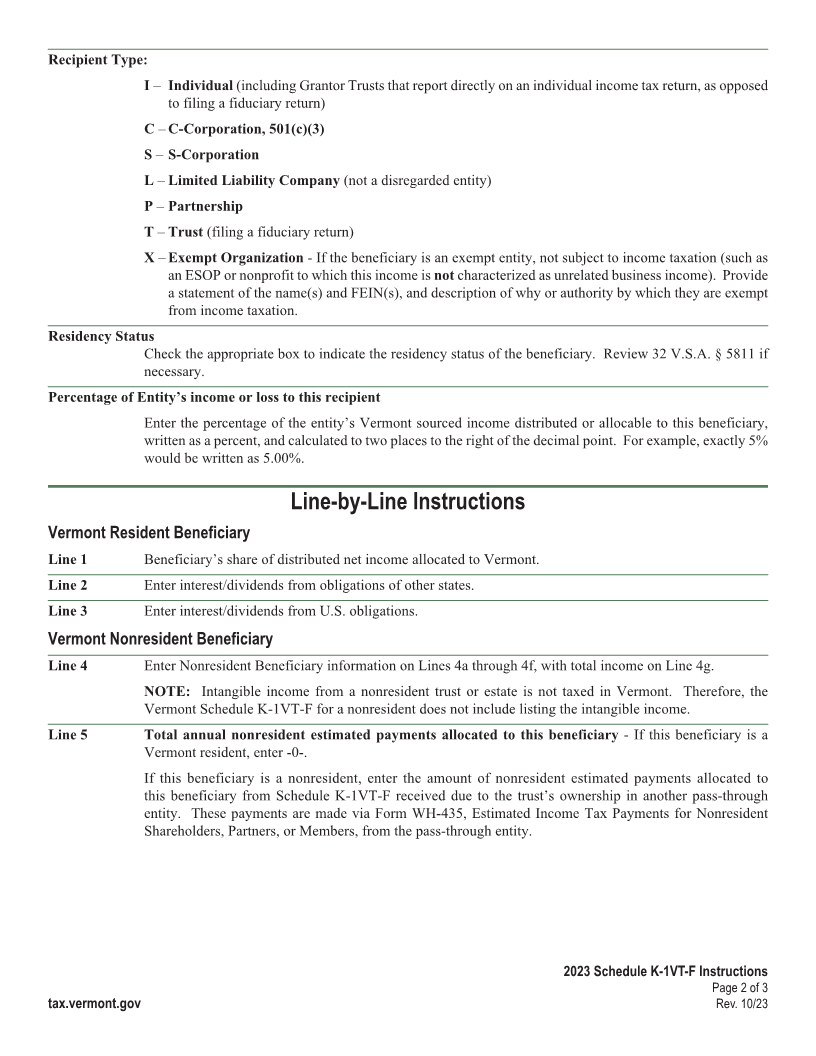
Enlarge image
SCHEDULE K-1VT-F
Beneficiary Information for Fiduciaries
Page 1
Please print in BLUE or BLACK ink only.
General Information
Schedule K-1VT-F reports the Vermont-sourced income earned by a trust or an estate that is passed through
to the beneficiaries. In general, trusts and estates should include a Schedule K-1VT-F for each beneficiary
with their Form FIT-161, Fiduciary Return of Income.
The fiduciary of a grantor trust is required to file with the Vermont Department of Taxes an information
return, Form FIT-161, along with a Schedule K-1VT-F indicating the items of income, deduction, and
credits against tax attributable to the trust treated as owned by the grantor/owner and send a copy of the
Schedule K-1VT-F to the grantor/owner, who is required to report the income, deductions, and credits on
their individual Vermont income tax return.
Every fiduciary must provide each beneficiary with a copy of their Schedule K-1VT-F on or before the due
date of Form FIT-161. INSTR (Place at FIRST page)
Instr. pages
For detailed information on filing requirements and definitions of income and residency, see Vermont law
at 32 V.S.A. § 5811, § 5823, § 5861.
COMPLETE A SEPARATE SCHEDULE K-1VT-F FOR EACH BENEFICIARY.
Above the Header Information – REQUIRED ENTRIES
1 - 3
Enter the begin and end dates of the fiscal year of the trust or estate filing the return.
Enter the Trust or Estate Name and Federal Employer Identification Number (FEIN) of the trust or estate
filing the return.
Header Information – REQUIRED ENTRIES
All information in the Header Section is required. Failure to correctly complete this information will result
in processing delays and/or late filing penalties for your return.
• Name, Address, FEIN
• If the beneficiary is an entity other than an individual, enter the Entity Name of the
beneficiary, and its FEIN. If the beneficiary is an individual, enter the individual’s Last Name,
First Name, and Middle Initial, and their Social Security Number.
• Enter the complete address of the beneficiary.
• Enter the Foreign Country for the beneficiary if other than the United States.
2023 Schedule K-1VT-F Instructions
Page 1 of 3
tax.vermont.gov Rev. 10/23

